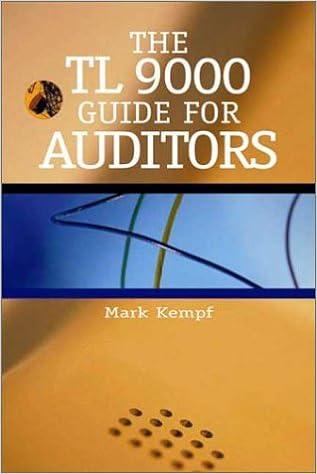Question
1. CASE STUDY Australian Motor Execs (AME) is set up as a proprietary company and is considering whether to enter the discount rental car market
1.
CASE STUDY
Australian Motor Execs (AME) is set up as a proprietary company and is considering whether to enter the discount rental car market in Tasmania. This project would involve the purchase of 100 used, late model, mid-sized cars at the average price of $18,000. In order to reduce their insurance costs, AME will have a LoJack Stolen Vehicle Recovery System installed in each car at a cost of
$1,500 per vehicle. The rental car operation projected by AME will have two locations: one near Hobart airport and the other near Launceston airport. At each location, AME owns an abandoned lot and building where it could store its vehicles. If AME does not undertake the project, the lots can be leased to an auto-repair company for $90,000 per year (total amount for both lots). The $25,000 annual maintenance cost (total for both lots) will be paid by AME whether the lots are leased or used for this project. This discount rental car business is expected to have minimum impact on AMEs regular car rental business in Tasmania, where the net cash flow is expected to fall by only
$20,000 per year.
For taxation purposes, the useful life of the cars is determined to be five years and they will be depreciated using the most advantageous depreciation method set out by the Income Tax Assessment Act. It is assumed that the cars will first be used at the beginning of the next financial year: 1 July 2018.
Before starting this new operation, AME will need to redevelop and renovate the buildings at each airport location. This is expected to cost $220,000 for both locations. AME has also budgeted
$80,000 in marketing costs that will be spent prior the start of operation and during the first two years of operation. In addition, if the project is undertaken, a total new injection of $150,000 in net working capital will be required.
Maeve, the company CFO would like you help her examine the viability of the project for the next five years taking into account the projections of sales and operating costs prepared by AMEs accountants. Given the risk associated with the project, she believes it is reasonable to use a cost of capital of 12% for the evaluation of this project. Further financial data relating to the project can be found in the appendix.
*Question1. Discuss which costs are relevant for the evaluation of this project and which costs are not. Your discussion should be justified by a valid argument and supported by references to appropriate sources.
APPENDIX: Additional information for the case
Initial capital expenditure
Acquisition of the car fleet (including LowJack system): $18,000 + $1,500 per vehicle
Renovation of building at airport locations :$220,000
Injection of net Working capital $150,000
For tax purposes, the cars (including the LowJack system) may be depreciated using either the prime cost or the diminishing value methods as set out in Division 40 of the Income tax Assessment Act (ITAA) 1997. The economic life of 5 years has been approved by the Commissioner of taxation. Maeve indicated to you that the company will retain the method that is the most advantageous to the company from a financial point of view.
Assume that AME is not able to claim any tax deduction for the capital expenditure relating to the renovation of the building until the business is sold. At that time the cost of renovation is taken into account to calculate the capital gain.
Marketing costs
The $80,000 marketing costs will be incurred as follows:
$40,000 immediately before the launch of the new operation (1/7/2018)
$20,000 at the beginning of year 2 (1/7/2019) i.e. end of year 1
$20,000 at the beginning of Year 3 (1/7/2020) i.e. end of year 2
These costs are fully tax deductible in the year they are incurred (assume calendar year).
Revenue projections
Revenue projections from car rental for the next five years are as follows
|
| Year 1 | Year 2 | Year 3 | Year 4 | Year 5 |
| Beginning | 1/7/2018 | 1/7/2019 | 1/7/2020 | 1/7/2021 | 1/7/2022 |
| Ending | 30/6/2019 | 30/6/2020 | 30/6/2021 | 30/6/2022 | 30/6/2023 |
| Revenue ($000) | 900 | 1,100 | 1,200 | 1,250 | 1,250 |
Operating costs
Operating variable costs associated with the new business represent 10 % of revenue. Annual operating fixed costs (excluding depreciation) are $1800 per vehicle.
Existing administrative costs are $550,000 per annum. As a result of the new operation these administrative cost will increase by 20 %.
Tax rate
The company is subject to a tax rate of 27.5% on its profits. The capital gain (if any ) on the sale of the business would also be taxed at 27.5%.
Step by Step Solution
There are 3 Steps involved in it
Step: 1

Get Instant Access to Expert-Tailored Solutions
See step-by-step solutions with expert insights and AI powered tools for academic success
Step: 2

Step: 3

Ace Your Homework with AI
Get the answers you need in no time with our AI-driven, step-by-step assistance
Get Started


